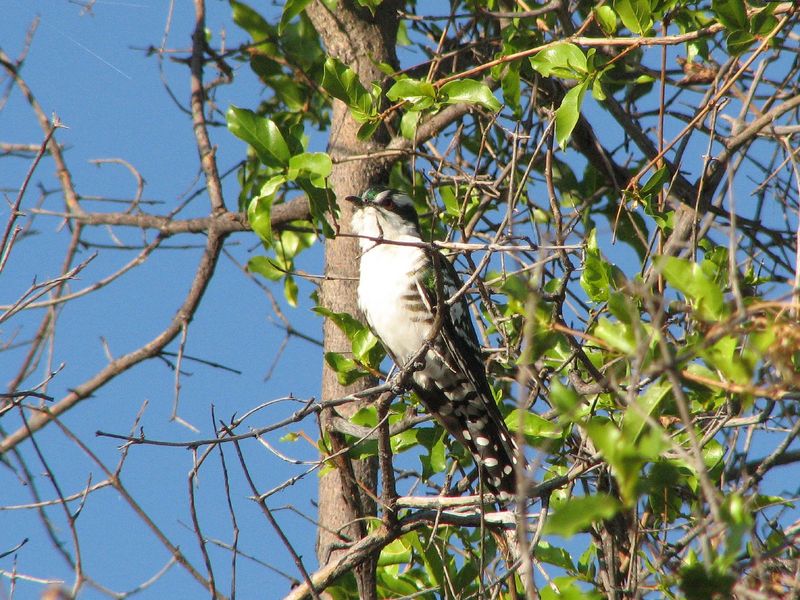Dideric Cuckoo (Chrysococcyx caprius) - Wiki Dideric Cuckoo
From Wikipedia, the free encyclopedia
Order: Cuculiformes
Family: Cuculidae
[Photo] Dideric Cuckoo (Chrysococcyx caprius), Namibia. Not uncommon African bird often heard calling its name loudly - "dee-dee-dereek". Source: Flickr (www.flickr.com/photos/merula/432613532/). Date: Taken on December 3, 2006. Author: Alastair Rae (www.flickr.com/photos/merula/).
The Dideric Cuckoo or Didric Cuckoo, Chrysococcyx caprius, is a member of the cuckoo order of birds, the Cuculiformes, which also includes the roadrunners, the anis, and the Hoatzin.
It is a very common resident breeder in Africa south of the Sahara Desert. It is a short-distance seasonal migrant, moving with the rains. It is a solitary bird, found in open woodland, savanna and riverside bushes. Has occurred as far north as Cyprus (1982).
The Dideric Cuckoo is a brood parasite. It lays its single egg mostly in the nests of weavers, especially Village Weaver and the bishops in the genus Euplectes.
The Dideric Cuckoo is a smallish cuckoo at 18 to 20 cm. Adult males are green above with copper-sheened areas on the back and whitish underparts. They have a broken white eyestripe, a green moustauchial stripe, and green outer tail feathers with small white spots.
Females show more copper above, and have coppery barring on the flanks. The underparts are often washed brownish. Juveniles are more copper-coloured above and browner below than the females, and the flank markings are brown blotches.
The Dideric Cuckoo takes a variety of insects and caterpillars. It is a noisy species, with the persistent and loud deed-er-ick call from which it gets its name.
http://en.wikipedia.org/wiki/Dideric_Cuckoo
| The text in this page is based on the copyrighted Wikipedia article shown in above URL. It is used under the GNU Free Documentation License. You may redistribute it, verbatim or modified, providing that you comply with the terms of the GFDL. |
